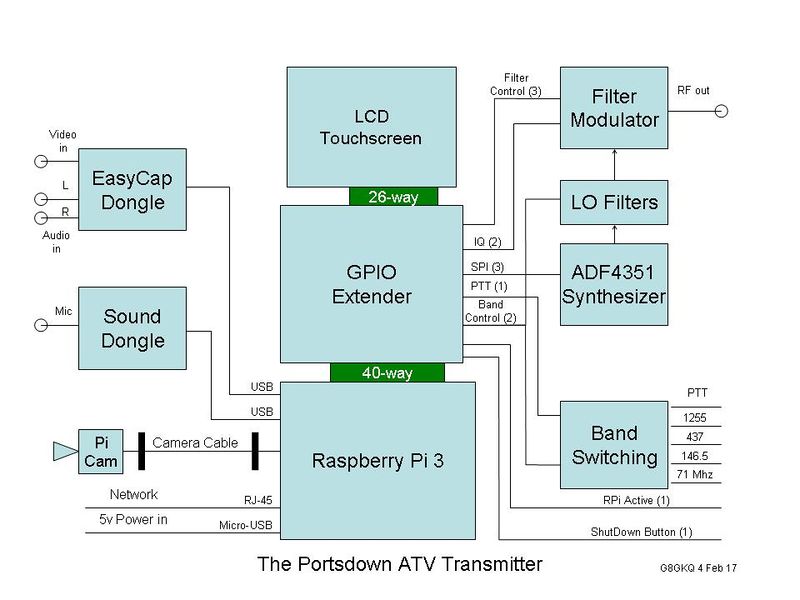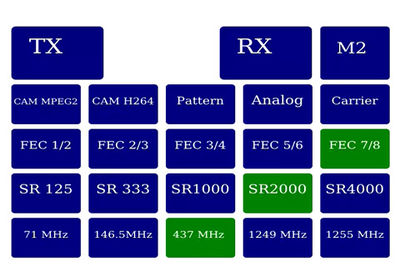Difference between revisions of "The Portsdown DATV transceiver system"
| Line 52: | Line 52: | ||
Now you've read the system overview, take a look at the [[Portsdown Transmitter User guide|user guide]] - it contains a lot more information on the hardware required and loading the software and includes a "[[Portsdown - where do I begin?|where do I begin]]" section. | Now you've read the system overview, take a look at the [[Portsdown Transmitter User guide|user guide]] - it contains a lot more information on the hardware required and loading the software and includes a "[[Portsdown - where do I begin?|where do I begin]]" section. | ||
| − | Or if you want to print off an overview of the project, we've produce a [ | + | Or if you want to print off an overview of the project, we've produce a [https://wiki.batc.tv/images/1/13/Portsdown_Brochure_V2.pdf 2 page introductory brochure]. |
Revision as of 17:06, 2 February 2017
Introduction
The Portsdown DATV transmitter project provides an easy way to “get on air” with Digital ATV at a relatively low cost covering all of the commonly used modes so enabling it to be used on ATV repeaters but also for RB-TV Dx working.
The project involves some basic construction and is based around a Raspberry Pi with a touchscreen, an external local oscillator and a filter modulator card available from the BATC shop - outline specifications are as follows:
• Wide range of Symbol rates from 125 Ks to 4Ms including Reduced Bandwidth (RB-TV) modes and “normal” DATV modes
• Frequency coverage of 146 MHz, 437 MHz and 23cms
• MPEG-2 and MPEG-4 (H264) video encoding
• Cost-effective stand-alone (not PC based) Digital TV Transmit solution
• Analogue video input to allow use of camcorders and mixing desks
• Use of commonly available components and modules
• Modular construction enabling a step-by-step system build and easy trouble shooting
• Designed to encourage home construction and requiring an average skill level
• Fully documented and supported including easy software installation and upgrades
The aim is to enable an amateur operator with little or no knowledge of Digital ATV to construct the hardware elements, load and configure the software and use the system to send live Digital ATV signals across town on his existing aerials. It will include the new DX RB-TV modes and the ability to receive and transmit to local repeaters using the more traditional 2 and 4 Msymbol DATV modes.
System overview
At the heart of the Portsdown project transmitter is a Raspberry Pi (RPi) computer running a BATC customised version of the F5OEO rpidatv software. The choice of the RPi is primarily due to the fact that it has an on-board MPEG-4 (H264) encoder and the versatile hardware interface (GPIO) capabilities.

Touch screen control
A touch screen interface (available from Amazon) on the RPi enables the system to be used without further need to connect up keyboard and mouse. If the LCD is not available, the system can be controlled by using an external PC connected over a wired or wi-fi network (console mode).
Modulator and Filter board
The output from the Rpi is connected to the Filter Modulator board (the only custom piece of hardware - PCBs will be available from the BATC shop).
This board also requires an on frequency local oscillator signal and the Portsdown transmitter software has been designed to control an ADF4351 chip (available from ebay) to give an output on 146, 437 and 23cms.
Audio and video inputs
The Portsdown transmitter will take audio and video inputs from the Rpi camera, an Easycap USB dongle and a USB sound card / dongle - all these are readily available from ebay and Amazon.
Next steps?
The great thing is you don't have to build any hardware to get started and send pictures across the shack!!
Now you've read the system overview, take a look at the user guide - it contains a lot more information on the hardware required and loading the software and includes a "where do I begin" section.
Or if you want to print off an overview of the project, we've produce a 2 page introductory brochure.
